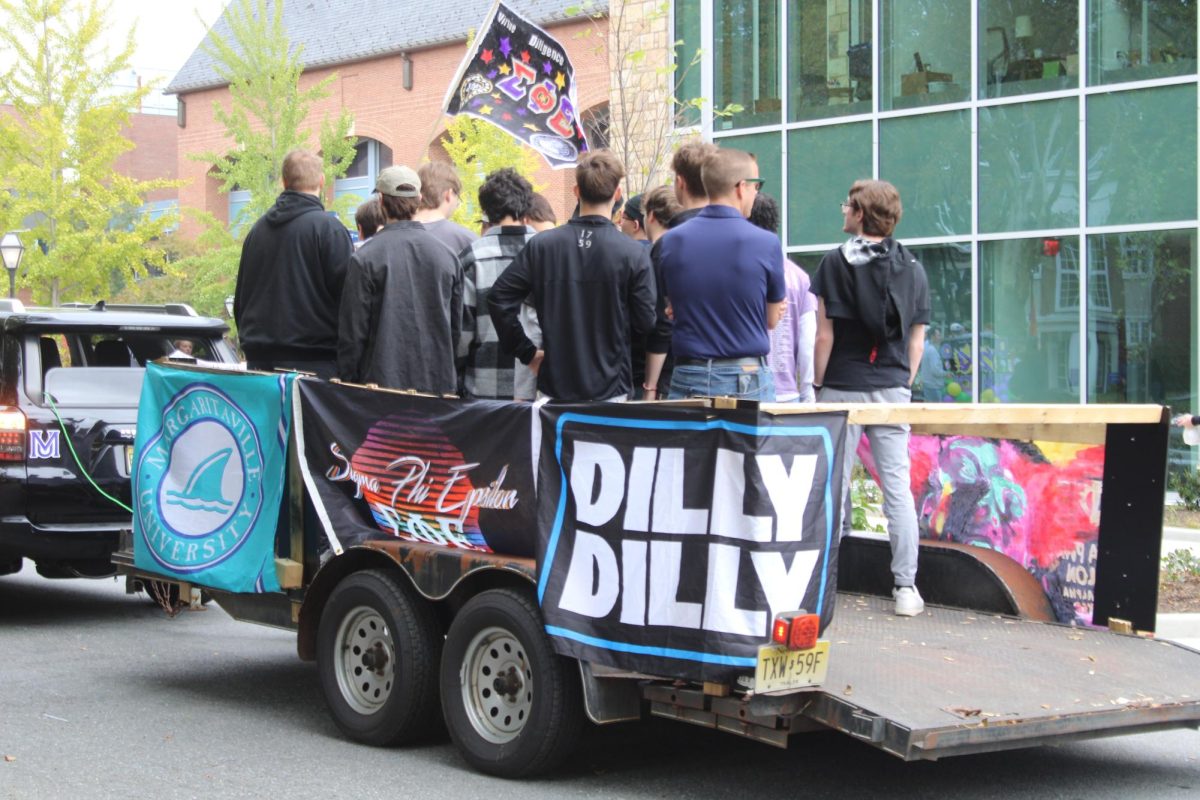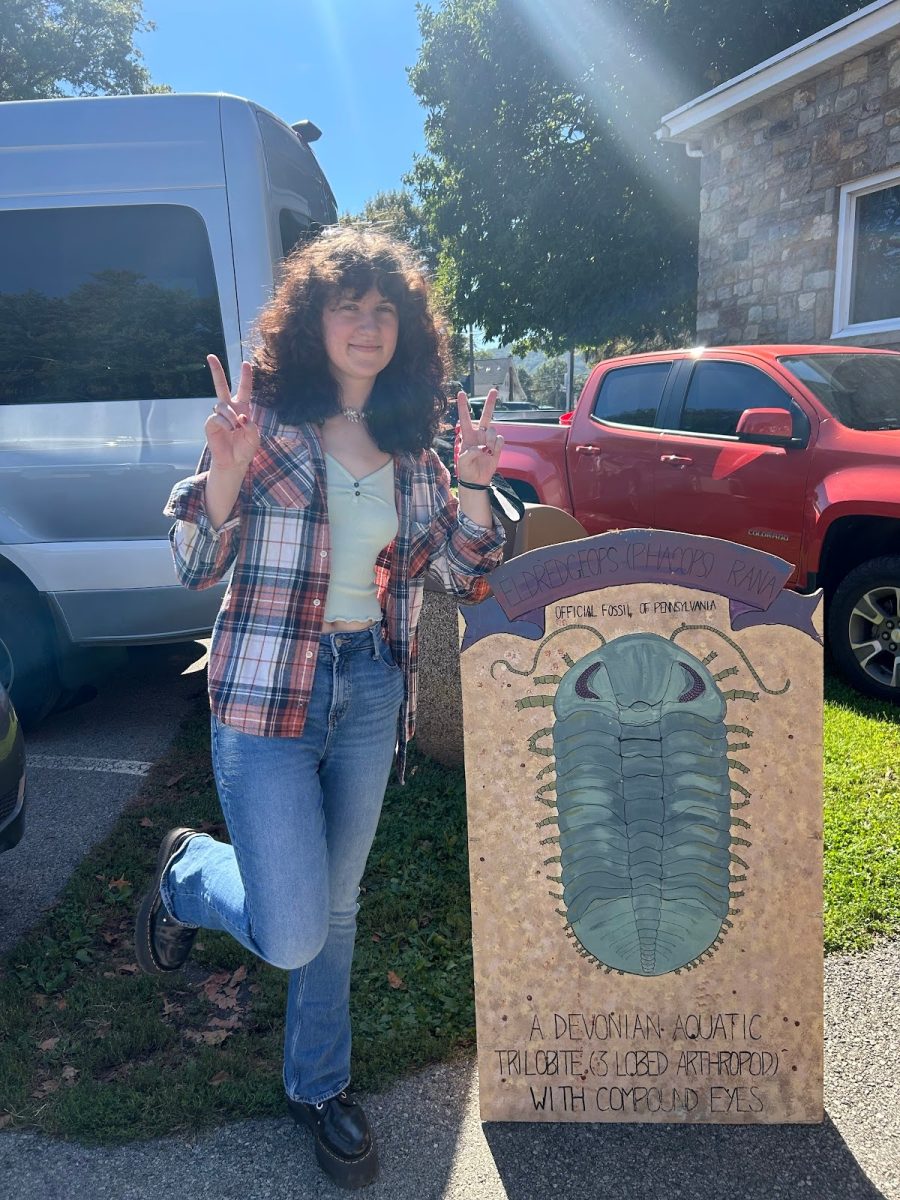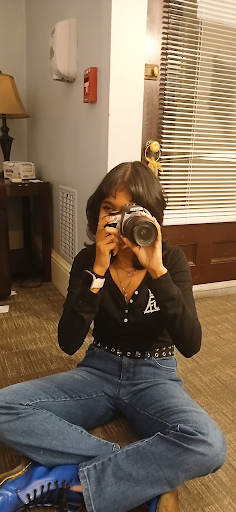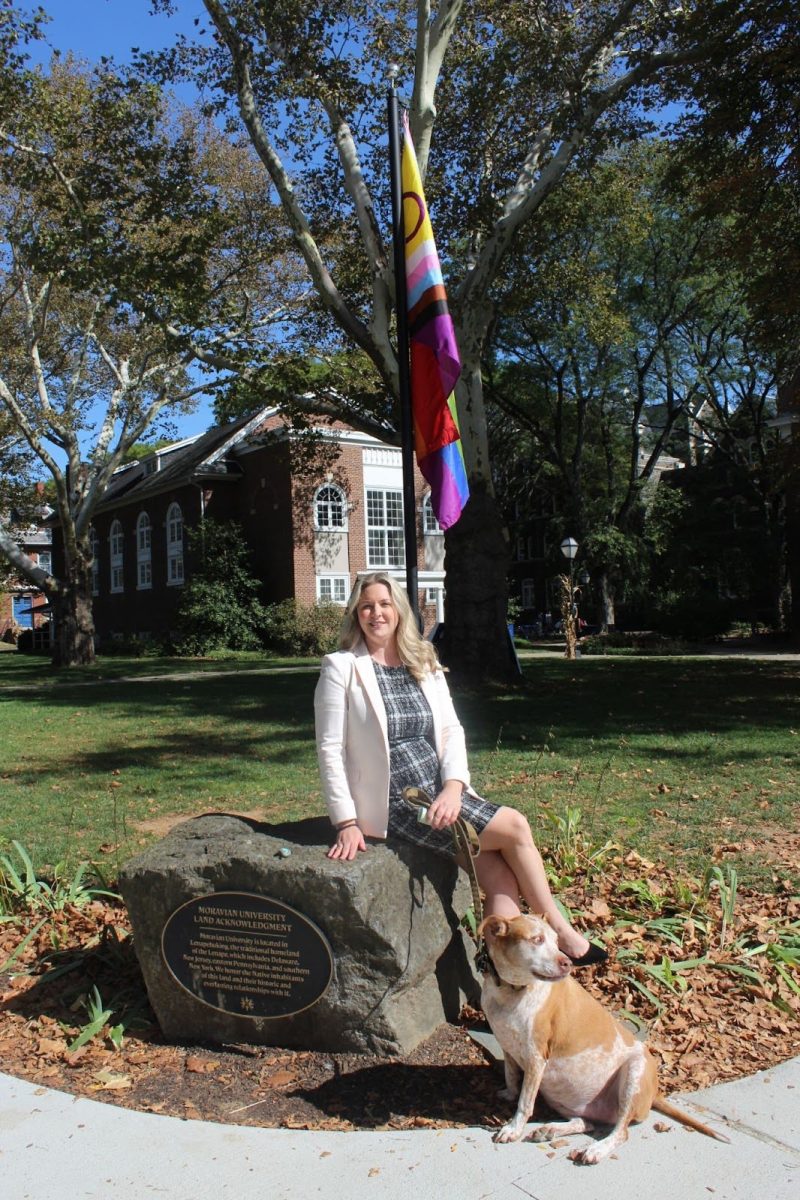Moravian takes pride in its deep history and the naturally beautiful campus it resides on. Last semester, I got the pleasure of speaking with one of the people involved in maintaining Moravian’s landscape, Randy Haffling.
Haffling, who recently left Moravian after over 14 years at the University, was the Assistant Director of Moravian’s Grounds and Logistics. He has an applied science degree in Ornamental Horticulture from Bucks Country and an environmental science degree from Delaware Valley University.
How/Why did you get into landscape architecture?
I studied native landscape design while at Delaware Valley. It was a very in-depth program in designing landscapes using native plants. I had courses in hydrology, geology, organic chemistry, and plant identification. We learned how to study the existing site conditions before developing a landscape plan. I wanted to focus my education on understanding the natural environment so that the landscapes I designed were as close as possible to mimicking it.
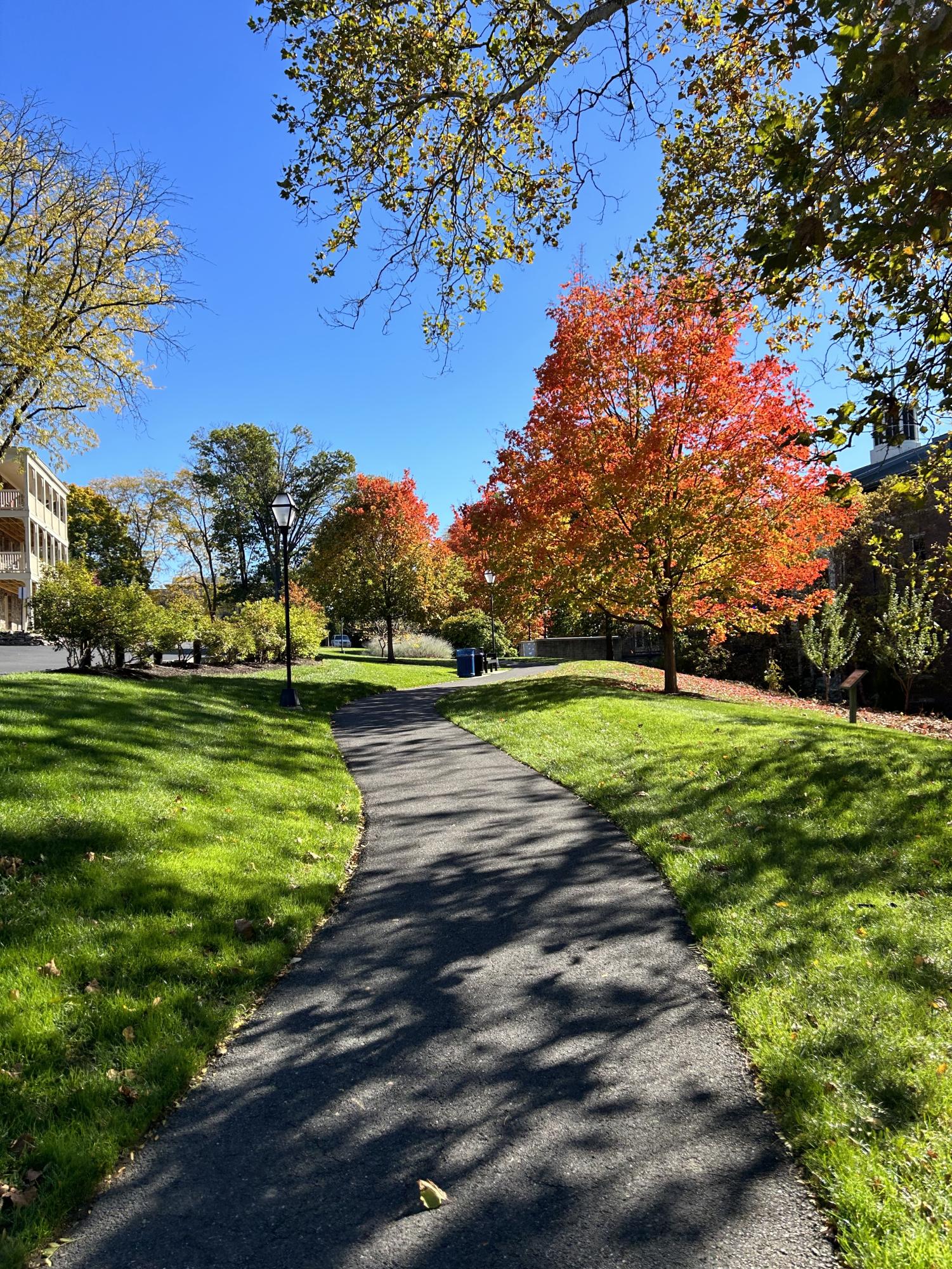 When did you come to Moravian and what made you start working here?
When did you come to Moravian and what made you start working here?
I started at Moravian in 2009. Before I was an account manager for a national grounds maintenance company. I had approximately 30 clients and shadowed another account manager’s 10 clients. Those clients were across all of northern New Jersey and some in upstate New York. As time went along, I began to think about how nice it would be to have one property to take care of. To have the ability with one property to make incremental changes each and every day and eventually be able to see the landscape evolve was something that increasingly intrigued me. Lo and behold, Moravian was advertising for my position, which happened to be exactly what I was looking for. I found the grounds staff and honestly, everyone that I have worked with in facilities has been great people. They all look at Moravian as their second home and do their very best every day to make it the amazing place that it is. Not only do I have this great opportunity to supervise the campus landscape, but I work with such wonderful people.
What does a typical day look like for you as the Assistant Director of Moravian’s Grounds?
Typically, I meet with our team first thing in the morning to review the work for the day. Often, we’ll have discussions about work they will be doing over the next few weeks. Next, I may have meetings to go to, or I’ll go to my office to return calls or send emails. I try to get out and walk the campus every day. My other responsibilities are managing our trash and recycling services and my staff set-up for all of the larger events. So, with respect to setting up for events, a lot of planning goes into preparing for each of them. I usually have conversations with Media Services and Catering to make sure we all have the information we need to properly set up for each event. Of course, keeping the campus grounds well maintained and looking good or setting up for events requires many hands. So, fortunately, I have a great team that consists of a foreman and four General Service Technicians, Grounds, one General Services Technician, Trash & Recycling, two General Services Technicians, and Delivery & Events. They too, like me, appreciate that each day they can build on the work they did the day before. They know the grounds are the first thing anyone sees, and we want to make sure we give a great first impression. My team continues to share ideas that will help enhance the look of the landscape. They, in fact, tour other campuses to gain ideas to bring back to our campus. They also attend conferences to be among their peers and learn new trends. The Delivery & Events Technicians set up for many of the smaller events across the campus besides the large events. They also set up the furniture for the freshmen before they arrive and make deliveries from cases of material to office furniture, getting to where it needs to be on a daily basis. Because they interact with our students, staff, and faculty, people get to know them, and that is something special.
 What are the guiding principles behind how you design the landscape?
What are the guiding principles behind how you design the landscape?
First and foremost to include native plants in everything that I design. We have a greenhouse behind our office that we use to grow many of the perennial flowers and some shrubs that are planted on the campus. This has allowed us to control the quality of the plants, save the university money by not having to purchase everything, and we have the plants here so we don’t have to drive somewhere to get them.
How do you determine what gets planted and where?
That goes back to what I studied in college – you need to know the site. There is a saying in the landscape industry: “Right plant, right place.” If you put a plant in full sun that will only grow well in the shade, then likely the plant’s health will slowly decline and will die. Another example would be if a plant doesn’t do well in wet soil, and you plant it where there is standing water, then again the plant will likely die. The more thought that goes into knowing the site and knowing your plants, will lead to the best possible chance of a successful landscape. Often I will collaborate with my foreman, who is very knowledgeable in plant material. We both know our goals and tend to be thinking of the same plant/s that we would like to add to the landscape.
What do you think changed the most about Moravian’s landscape since you have started working for the university?
We have been gradually removing overgrown plants that have required a lot of maintenance and are usually non-native. As we have gone along, we have removed them and added native plants that require less maintenance and added more beauty to the campus. Incorporating plants that have flowers, maybe colorful berries, and/or vibrant fall colors.
What were the biggest challenges you faced in making changes to the landscape?
 Increasingly the biggest challenge has been the effects of climate change. I have seen in just 14 years how the fluctuations in the weather have affected the plants on the campus. Our summers are hotter. For example, sugar maples used to grow well in this part of the country, but since I have been here, a couple have dried on the campus, and the remaining ones are struggling to survive. We either have longer periods of dry weather or we have bouts of extreme rainfall in a short amount of time. That has led to more issues of bacterial diseases affecting the plants. We have very little snow. As we continue to have mild winters, the absence of very cold temperatures has made it easier for insects to survive through the winter. That has been great for the beneficial insects that survive; however, more of the non-native insects, such as the spotted lanternfly, are surviving. As a result, we are treating our plants more often to protect them from diseases and destructive insects.
Increasingly the biggest challenge has been the effects of climate change. I have seen in just 14 years how the fluctuations in the weather have affected the plants on the campus. Our summers are hotter. For example, sugar maples used to grow well in this part of the country, but since I have been here, a couple have dried on the campus, and the remaining ones are struggling to survive. We either have longer periods of dry weather or we have bouts of extreme rainfall in a short amount of time. That has led to more issues of bacterial diseases affecting the plants. We have very little snow. As we continue to have mild winters, the absence of very cold temperatures has made it easier for insects to survive through the winter. That has been great for the beneficial insects that survive; however, more of the non-native insects, such as the spotted lanternfly, are surviving. As a result, we are treating our plants more often to protect them from diseases and destructive insects.
Which parts of the landscape are you most proud of?
On the Hurd Campus, we have some of the largest and oldest trees and the oldest buildings on our campus. Our team built a natural stone wall that runs along the driveway behind Foy Hall. Everywhere you look, you either see large mature trees, historic buildings, and the stone wall that just looks like it has been there as long as everything else. Another part of the campus I am proud of is our athletic fields. Since I have been here, the athletic fields have been treated with organic fertilizers, and the grass is a lush and verdant color.
Are there any future plans you have in mind for the landscape of Moravian?
It’s great that we have so many mature trees on our campus, which I think makes us unique because we are located in a city. I think most people are surprised when they walk the campus and see so many trees and how large they are. However, I think many may agree that our campus is always changing. In just a short time, The HILL Dorm, Sports Medicine and Rehabilitation, and the Sally building were added, as well as Lot X being built along the western edge of campus. And as we look at the expansion of the HUB, change is always happening. I have a great team to work alongside every day; we will continue to do what we have been doing. Adding more native plants to the landscape and being diligent in protecting what we have so there is a healthy, vibrant landscape to enjoy. Providing great service is the hallmark of our department each and every day.



